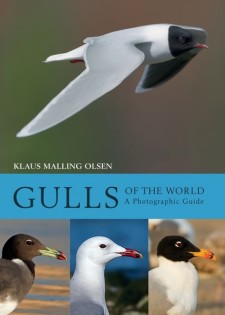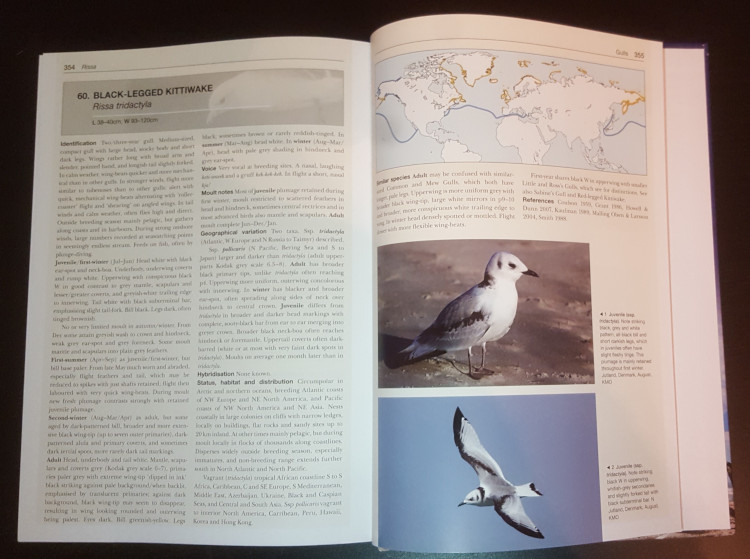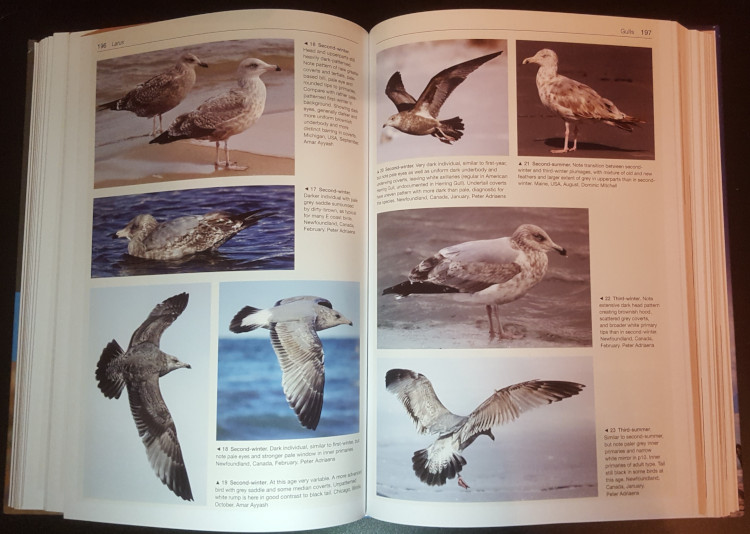Reviewed by Grant McCreary on August 8th, 2018.
Gulls are hard. Still, I think they get a bad rap. They can be very attractive, often exhibit interesting behavior, and – unlike many other, more popular groups – are usually easy to watch. But, it remains that they can be very difficult to identify. The sheer amount of variation in some species is enough to drive birders crazy. With different appearances based on age, subspecies, feather wear, hybridization, and, sometimes it seems, just because, even the best field guides can’t show everything. So this is one group that demands a detailed identification guide. Klaus Malling Olsen has delivered the latest such guide, Gulls of the World: A Photographic Guide.
Gulls of the World includes 61 gull species, following the taxonomy of Handbook of the Birds of the World, but with “some exceptions and rearrangements” for practical reasons. Each account begins with some text, most of which is related to identification, includes one or two maps, and finishes with an extensive selection of photographs.
Just as I’m sure you would when picking up this book, let’s jump right to the photos, for these are the heart of the book. They show the gull in just about every plumage aspect, both standing/swimming and in flight. There are, on average, about 20 photos of each gull, spread over four pages. But the number varies widely depending on the bird, with four-year gulls needing more to show all the variation. Iceland Gull has the most pictures: 35, across eight pages. On the other end of the spectrum are some two-year and range-restricted species. For example, Lava Gull has only six pictures, and just two pages for the entire account. But, given its restriction to the Galapagos and that it is “unmistakable”, I suppose that’s not surprising for this “rarest gull in the world” (as I learned here).
The author notes, on one the very first page on the introduction, that “this book is a photographic companion guide to Gulls of Europe, Asia and North America.” So I was expecting that this new guide would have a great many more photos than the older. Surprisingly, that is not the case. For all the species I checked, the number of photos did not differ appreciably, and if anything, the older guide seems to have more on average. The photos in this latest one, however, do appear to be better, in that they are generally slightly larger, sharper, and show the bird in a better position.
Captions accompany each photo, identifying the molt and age (using the calendar-year system, i.e. “first-winter”, “second-summer”, “adult”) and pointing out identification features to look for. These are placed adjacent to the photos they describe, which is much more preferrable than being bunched together at the bottom of the page, as they were in the author’s previous guide.
The text covers:
- Identification – by far the largest section, it gives general characteristics and then specifics for each age class
- Voice
- Moult notes
- Geographical variation
- Hybridisation
- Status, habitat and distribution
- Similar species
- References – some “source material and further reading”
The accounts cover the same general topics as those in Gulls of Europe, Asia and North America, but are much more condensed. If I had a specific identification question, I would go to Gulls of the World first, as the text in the older guide is much harder to wade through, being more of a reference.
The oft-repeated refrain of “don’t ignore the introduction” certainly applies here. You will find 19 pages, liberally illustrated with photos, that will help you sort out the patterns in the ageing of gulls, see past plumage abnormalities, and judge size and jizz.
The maps are large and show the permanent, breeding, and winter and migration ranges. However, they unfortunately don’t include any political boundaries, which makes it tough to get an idea of the exact range.
Another major annoyance is that the plates have no indication of what species you’re seeing. This makes it extremely difficult to browse the book; at one point I had to turn back five pages just to find out what I was looking at!
I feel the need to disclaim that I’m not a gull expert, so I don’t feel qualified to judge the accuracy of the text and captions. Peter Adriaens and Amar Ayyash, however, are. They have published an extensive list of errata along with their excellent review for the American Birding Association.
Recommendation
This much is certain: you need a gull reference book. Gulls of the World: A Photographic Guide fits the bill well. However, if you already have one of the other relatively recent guides – Peterson Reference Guides to Gulls of the Americas or, especially, Gulls of Europe, Asia and North America – then I don’t see a compelling reason for any other than raging larophiles to get this latest one.
For those in North America, you should also be aware that Gulls Simplified, by Pete Dunne and Kevin Karlson, is set to be published later this year. It doesn’t look like a reference guide – and thus not a direct competitor to Gulls of the World – but rather an ID tutorial. In other words, exactly the book that I’ve been waiting for.
Disclosure: I get a small commission for purchases made through links in this post.
Buy from NHBS
(based in the U.K.)
Disclosure: The item reviewed here was a complementary review copy provided by the publisher. But the opinion expressed here is my own, it has not been influenced in any way.








Comment